

💧 What is Retinol?
Retinol is a vitamin A derivative and one of the most well-researched ingredients in dermatology. It belongs to the retinoid family, which includes other compounds like retinaldehyde, retinoic acid (tretinoin), and retinyl esters. Retinol is converted into retinoic acid in the skin, the biologically active form that binds to nuclear receptors and regulates cellular processes.
This ingredient is widely celebrated for its ability to accelerate cell turnover, stimulate collagen production, reduce wrinkles, and improve hyperpigmentation.
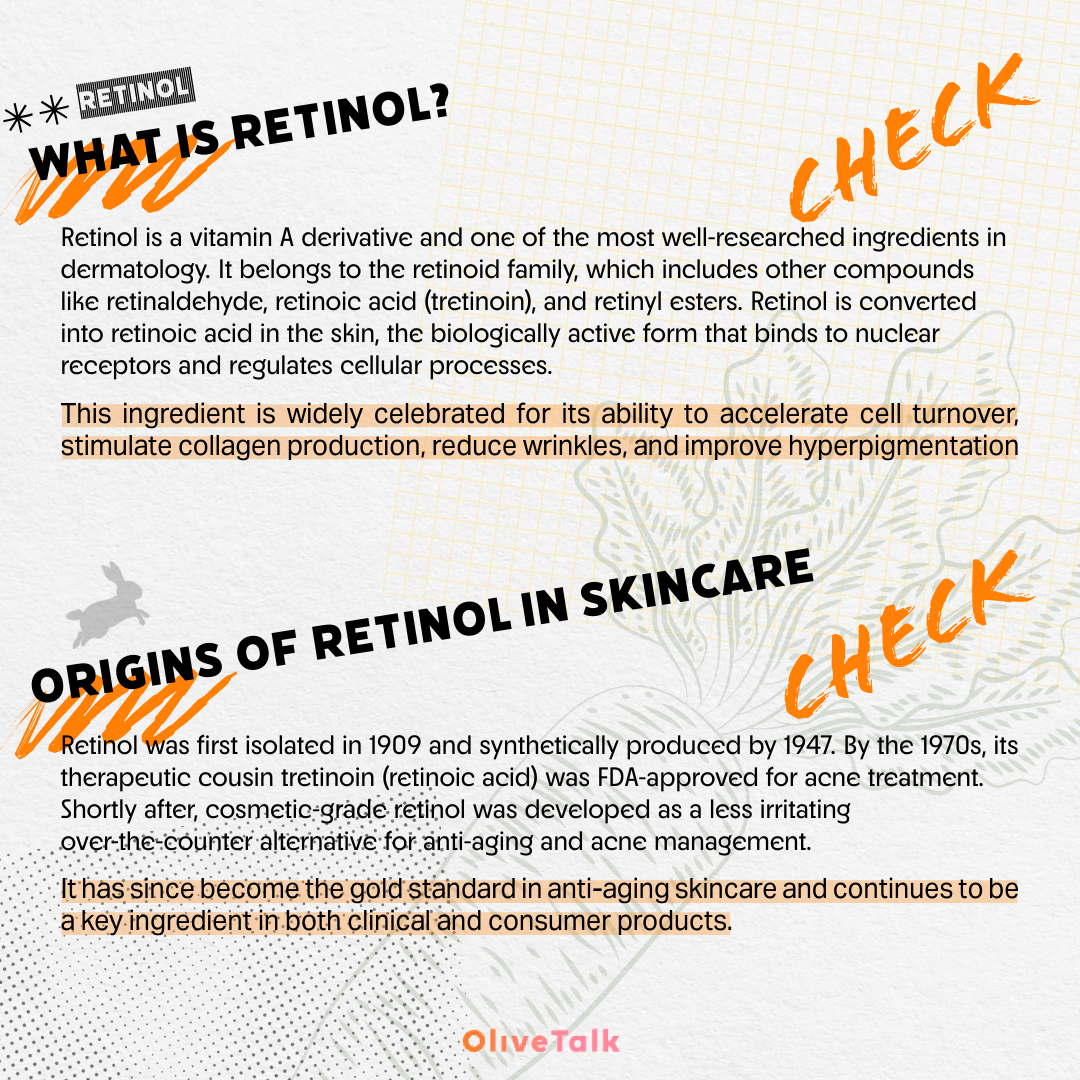
🌿 Origins of Retinol in Skincare
Retinol was first isolated in 1909 and synthetically produced by 1947. By the 1970s, its therapeutic cousin tretinoin (retinoic acid) was FDA-approved for acne treatment. Shortly after, cosmetic-grade retinol was developed as a less irritating over-the-counter alternative for anti-aging and acne management.
It has since become the gold standard in anti-aging skincare and continues to be a key ingredient in both clinical and consumer products.
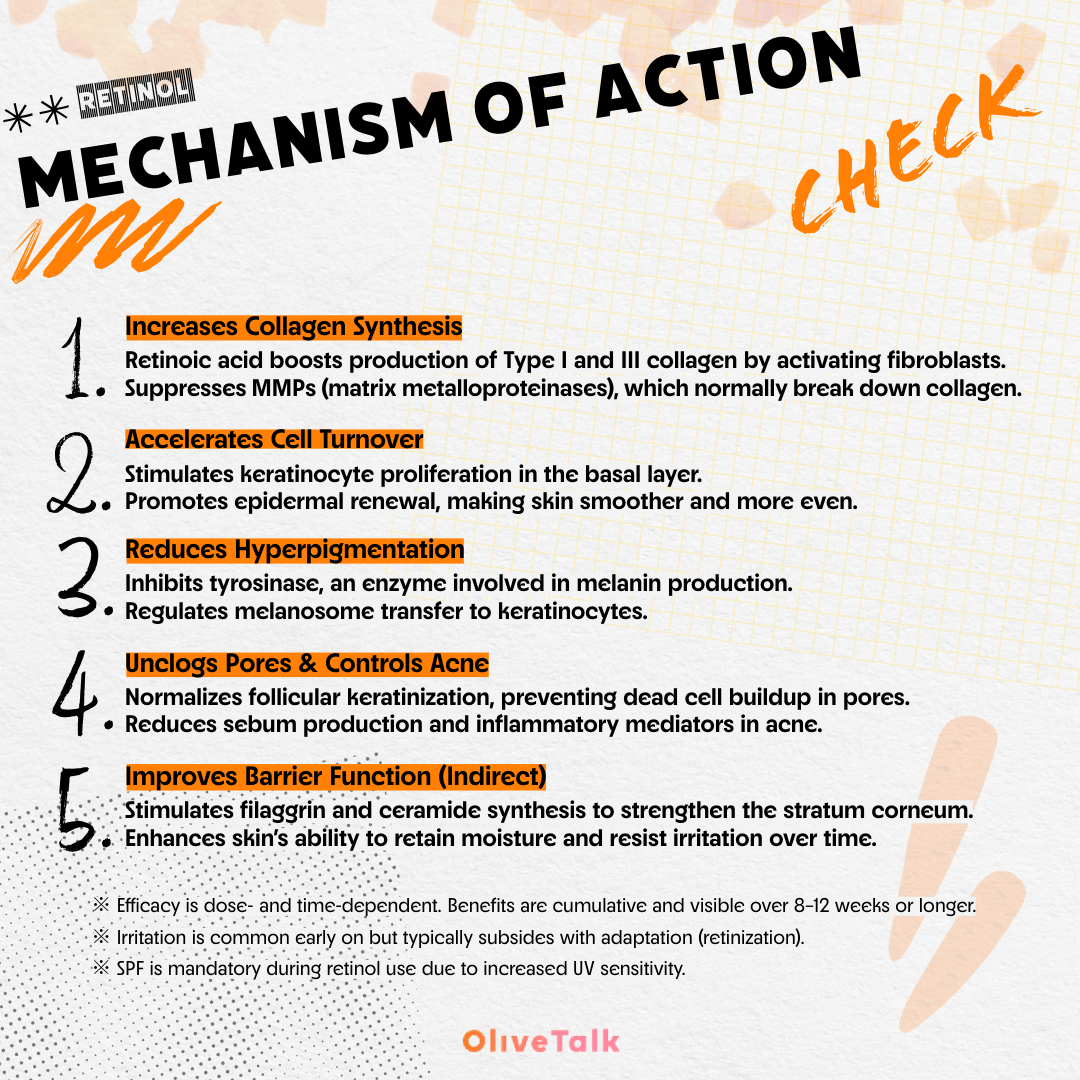
🔬 Mechanism of Action I (Retinoid Conversion Pathway)
1. Retinol is a vitamin A derivative that functions as a prodrug, requiring metabolic conversion in the skin to become active. This occurs through a two-step enzymatic oxidation process
✅ Step 1
Retinol → Retinaldehyde
Enzyme - Retinol dehydrogenase (RDH)
Reaction - Alcohol group is oxidized into an aldehyde
Function - Retinaldehyde is more reactive and closer to biological activity
✅ Step 2
Retinaldehyde → Retinoic Acid (Tretinoin)
Enzyme - Retinal dehydrogenase (RALDH)
Reaction - Aldehyde oxidized into a carboxylic acid
Function - Retinoic acid is the biologically active form that directly binds to nuclear receptors
2. Once converted to retinoic acid It binds to
Retinoic Acid Receptors (RAR-α, RAR-β, RAR-γ)
Retinoid X Receptors (RXR)
These nuclear receptors form dimers and modulate gene expression by attaching to retinoic acid response elements (RAREs) in the DNA of skin cells.
3. This influences
- Keratinocyte proliferation & differentiation
- Fibroblast activation
- Extracellular matrix remodeling
- Melanogenesis regulation
💡 Mechanism of Action II (Skin Benefits)
1. Increases Collagen Synthesis
- Retinoic acid boosts production of Type I and III collagen by activating fibroblasts.
- Suppresses MMPs (matrix metalloproteinases), which normally break down collagen.
※ Result: Reduced wrinkle depth, firmer skin, improved elasticity
2. Accelerates Cell Turnover
- Stimulates keratinocyte proliferation in the basal layer.
- Promotes epidermal renewal, making skin smoother and more even.
※ Result: Faded discoloration, minimized pores, refined texture
3. Reduces Hyperpigmentation
- Inhibits tyrosinase, an enzyme involved in melanin production.
- Regulates melanosome transfer to keratinocytes.
※ Result: Brightened skin tone, reduction in age spots, PIH improvement
4. Unclogs Pores & Controls Acne
- Normalizes follicular keratinization, preventing dead cell buildup in pores.
- Reduces sebum production and inflammatory mediators in acne.
※ Result: Fewer breakouts, smoother skin, less congestion
5. Improves Barrier Function (Indirect)
- Stimulates filaggrin and ceramide synthesis to strengthen the stratum corneum.
- Enhances skin’s ability to retain moisture and resist irritation over time.
※ Result: Better resilience, reduced sensitivity (after adaptation phase)
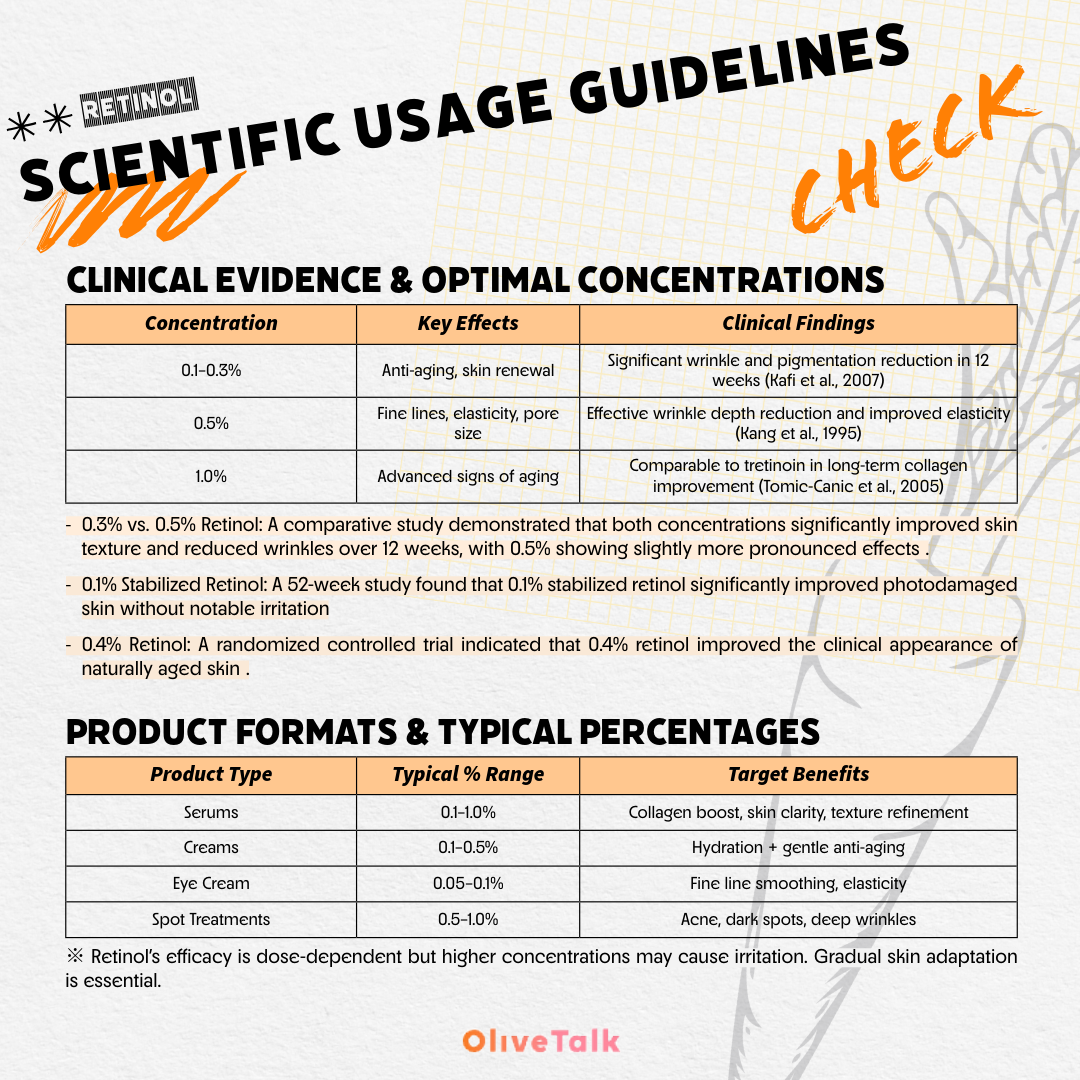
🧪 Clinical Evidence & Optimal Concentrations
Retinol's effectiveness is well-documented across various concentrations
(Concentration / Key Effects / Clinical Findings)
- 0.1–0.3% / Anti-aging, skin renewal / Significant wrinkle and pigmentation reduction in 12 weeks (Kafi et al., 2007)
- 0.5% / Fine lines, elasticity, pore size / Effective wrinkle depth reduction and improved elasticity (Kang et al., 1995)
- 1.0% / Advanced signs of aging / Comparable to tretinoin in long-term collagen improvement (Tomic-Canic et al., 2005)
<Additional Studies>
0.3% vs. 0.5% Retinol : A comparative study demonstrated that both concentrations significantly improved skin texture and reduced wrinkles over 12 weeks, with 0.5% showing slightly more pronounced effects .
0.1% Stabilized Retinol : A 52-week study found that 0.1% stabilized retinol significantly improved photodamaged skin without notable irritation .
0.4% Retinol : A randomized controlled trial indicated that 0.4% retinol improved the clinical appearance of naturally aged skin .
※Note : While higher concentrations may offer more dramatic results, they also increase the risk of irritation. It's essential to start with lower concentrations and gradually build up tolerance.
🍉 Product Formats & Typical Percentages
Retinol is incorporated into various skincare products, each tailored for specific benefits
(Product Type / Typical % Range / Target Benefits)
- Serums / 0.1–1.0% / Collagen boost, skin clarity, texture refinement
- Creams / 0.1–0.5% / Hydration + gentle anti-aging
- Eye Creams / 0.05–0.1% / Fine line smoothing, elasti city
- Spot Treatments / 0.5–1.0% / Acne, dark spots, deep wrinkles
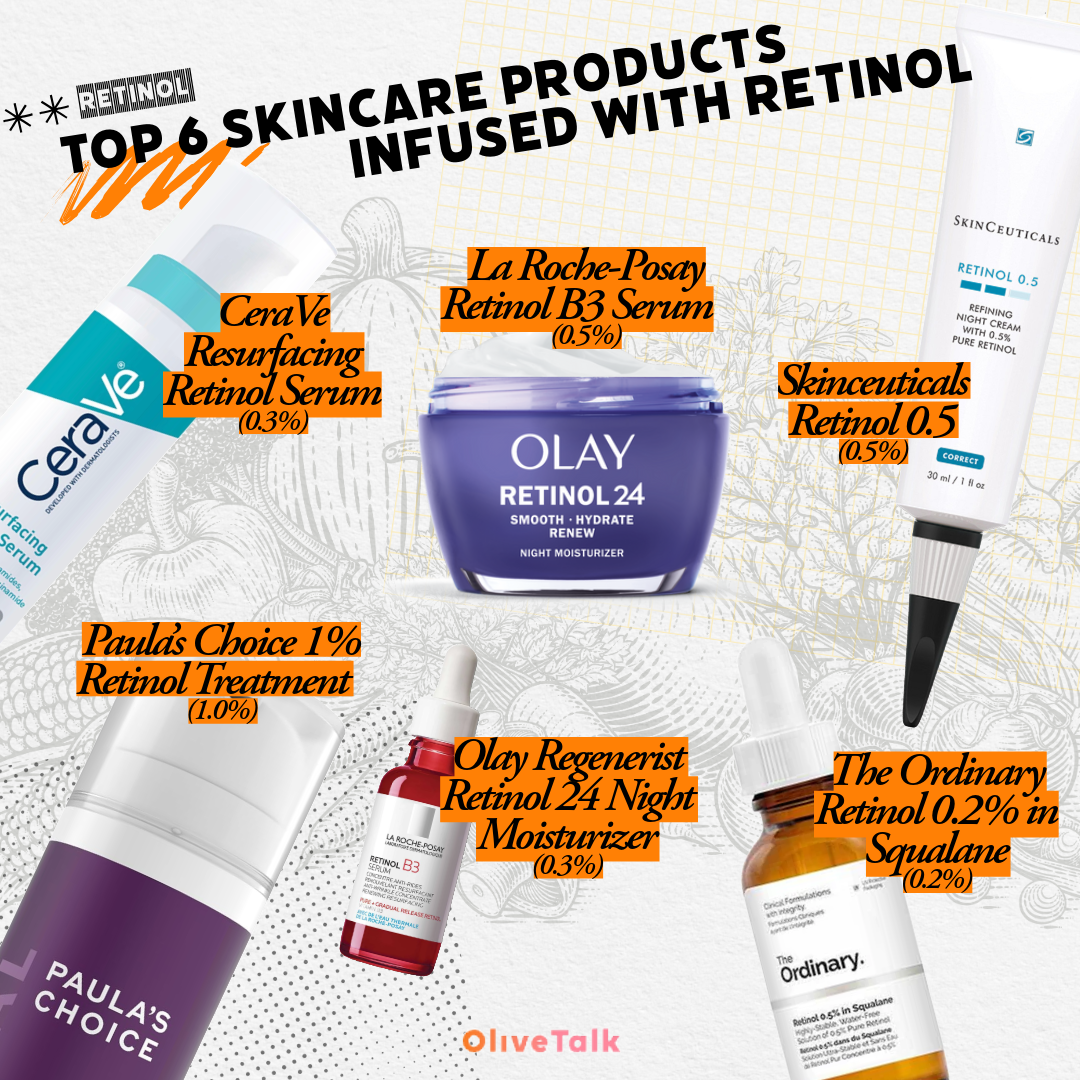
<Top 5 Skincare Products Infused with Retinol>
1. Paula’s Choice 1% Retinol Treatment
Retinol Content : 1.0%
Country : US
2. Skinceuticals Retinol 0.5
Retinol Content : 0.5%
Country : US
3. CeraVe Resurfacing Retinol Serum
Retinol Content : 0.3%
Country : US
4. Olay Regenerist Retinol 24 Night Moisturizer
Retinol Content : 0.3%
Country : US
5. The Ordinary Retinol 0.2% in Squalane
Retinol Content : 0.2%
Country : CA
6. La Roche-Posay Retinol B3 Serum
Retinol Content : 0.3%
Country : FR
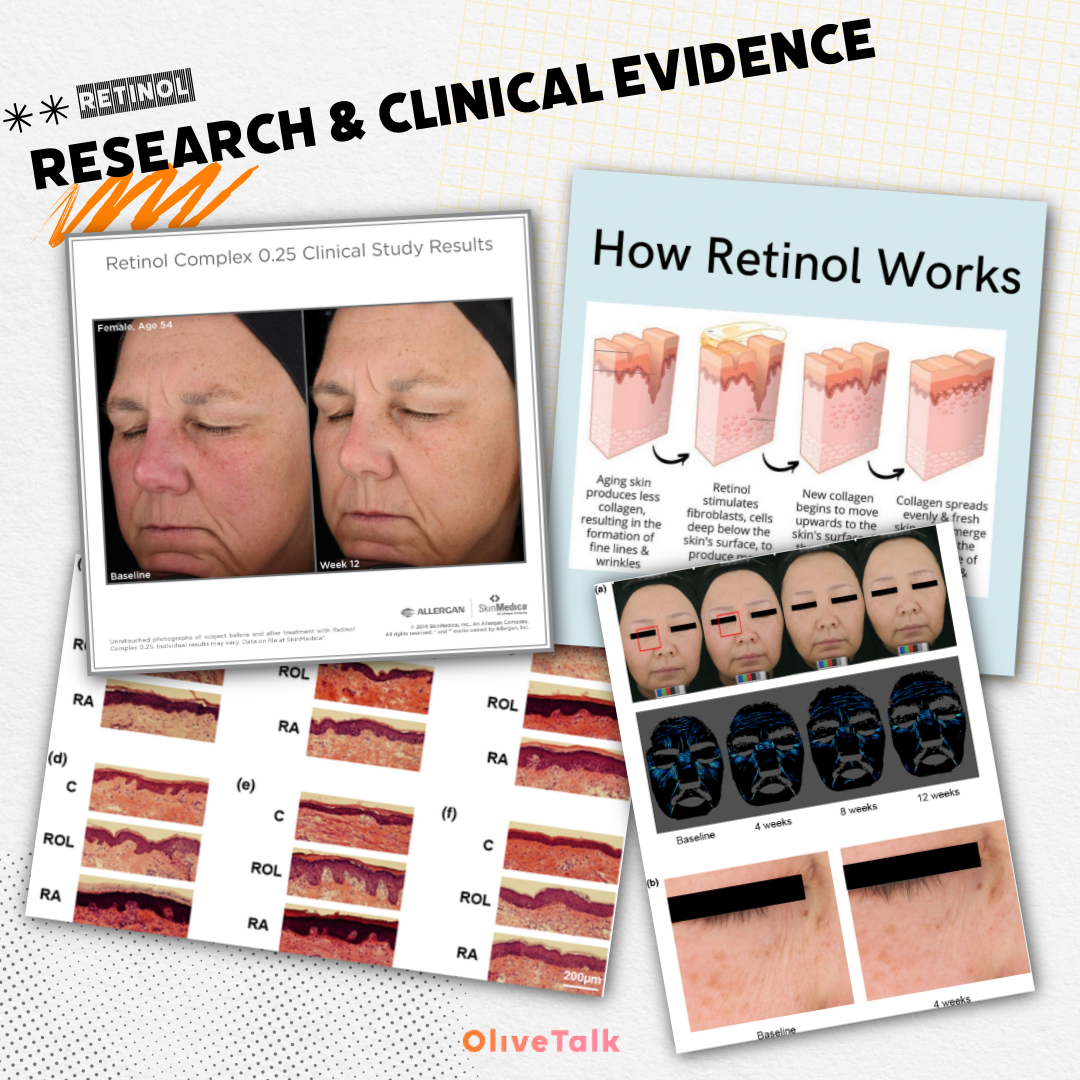
🏃♂️ Historical Note: From Acne to Anti-Aging
Retinoic acid was initially used in the 1960s for acne treatment, but dermatologists soon observed additional benefits like smoother texture and fewer wrinkles. This led to the development of retinol—a milder, over-the-counter alternative with fewer side effects.
Today, retinol is widely regarded as one of the most effective and scientifically supported anti-aging ingredients available.
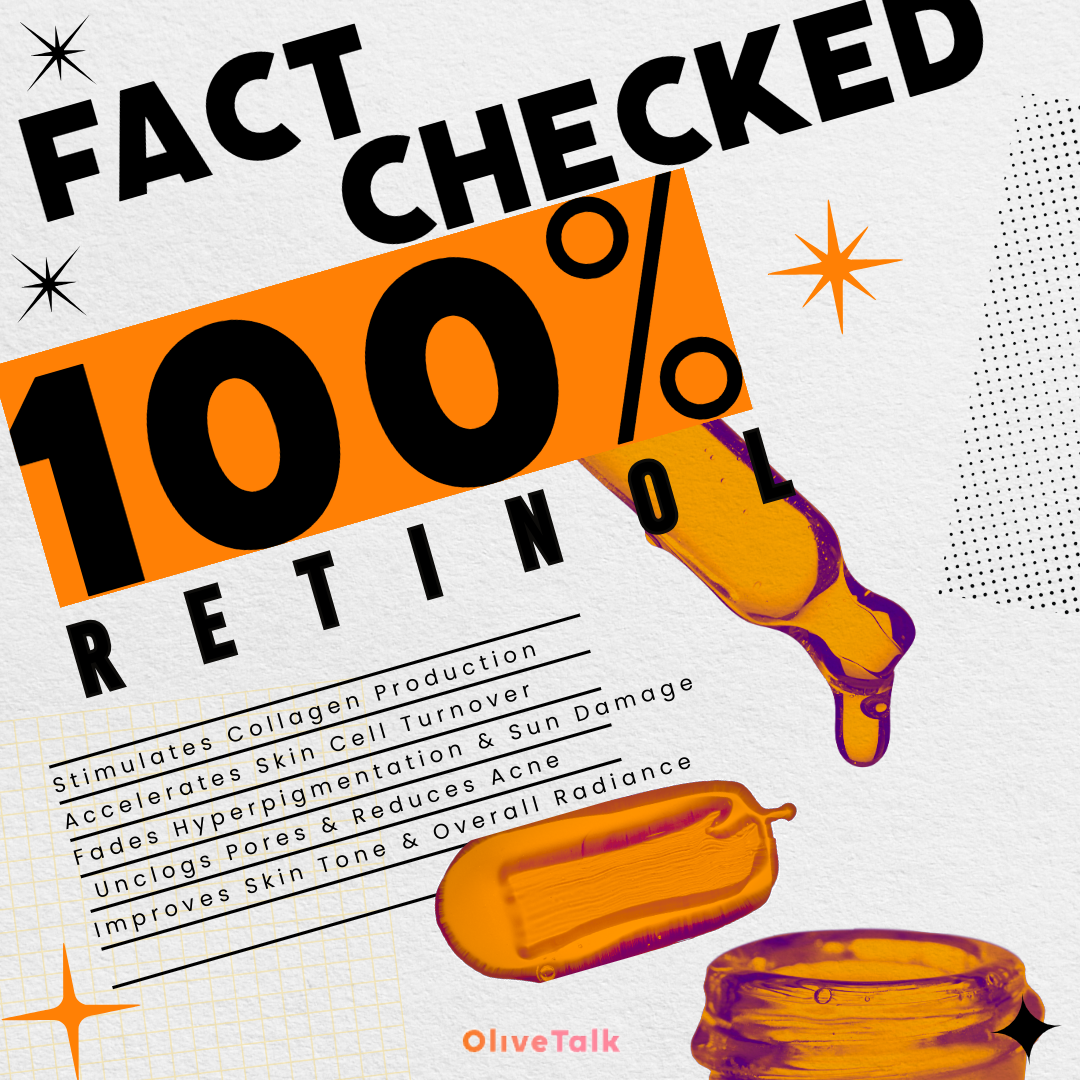
📚References
Kafi, R. et al. (2007). Improvement of naturally aged skin with vitamin A (retinol). Archives of Dermatology, 143(5), 606–612.
Kang, S. et al. (1995). Application of retinol enhances collagen synthesis in photoaged human skin. Journal of Investigative Dermatology, 105(4), 489–495.
Tomic-Canic, M. et al. (2005). Retinoids in the treatment of skin aging: an overview of clinical efficacy and safety. Clinical Interventions in Aging, 1(4), 327–348.
A Clinical Anti-Ageing Comparative Study of 0.3 and 0.5% Retinol. Skin Pharmacology and Physiology, 33(2), 102–109.
One-year Topical Stabilized Retinol Treatment Improves Photodamaged Skin. Journal of Drugs in Dermatology, 15(2), 271–278.
Improvement of Naturally Aged Skin With Vitamin A (Retinol). JAMA Dermatology, 143(5), 606–612.
 36Comments
36Comments
Fine lines? Gone.
Texture? Smooth.
Acne? Obliterated.
The purge was brutal but soooo worth it. I will die for this.
- Collagen boosts
- Cell turns over
- Pigmentation fades
It’s not just hype but molecular magic!